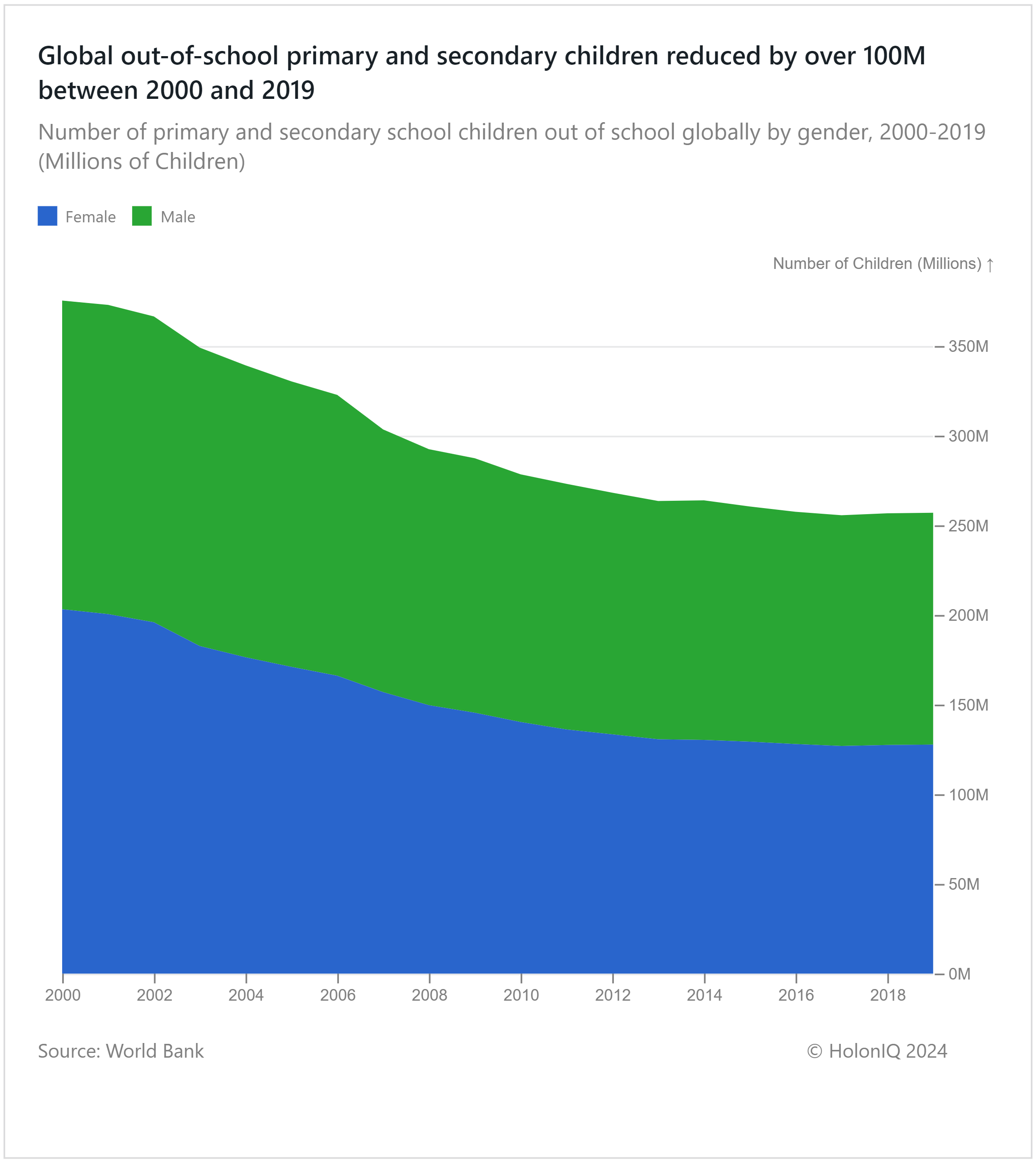🌞 Solar+Wind>Nuclear. 100M Back in School. $380B Diabetes Expenditure.
Chart of the Day #72 looks at Out-of-School Children, Renewable Energy and Diabetes Expenditure.
Hallo 👋
The US Department of Energy has exceeded $1 billion in funding to US colleges and universities to support nuclear science & technology research. A recent study reveals that Ghana's policy of free high school education is increasing the number of girls who successfully finish secondary schooling.
Today's Topics
🌞 Renewable Energy. Solar and wind power generation surpasses nuclear
📖 Education. 100M fewer children out of school
🍭 Diabetes. The US and China top diabetes health expenditure
For unlimited access to over one million charts, request a demo.
🌞 Solar and Wind Power Generation Surpasses Nuclear

Solar and wind energy have seen significant growth, outpacing nuclear power in recent years. While nuclear energy electricity generation has steadily increased over time, the expansion of solar and wind power has been more pronounced, especially after 2010. By 2021, solar and wind energy had surpassed nuclear power in global electricity generation.
The 2010s witnessed significant advancements in clean energy technology, particularly in solar and wind power. Decreasing costs of solar photovoltaic (PV) panels made solar energy increasingly competitive against fossil fuels, while innovations in wind turbine design and efficiency drove the expansion of wind power capacity globally. Concerns about environmental impacts and safety risks associated with nuclear energy have also contributed to a slowdown in the construction of new nuclear plants.
📖 100M Fewer Children out of School

The trend in primary and secondary school enrollment rates from 2000 to 2019 has been positive, with more children completing their education, and gender disparities narrowing. Female children out of school decreased by over 75M from 2000 to 2019, while male children out of school declined by over 42M. The reduction could be attributed to various factors, including the efforts of teachers and policymakers to improve access to education and reduce dropout rates.
The COVID-19 pandemic disrupted the education of over 1.6 billion learners globally due to full or partial school closures. UNICEF advocated for more inclusive remote learning and school reopening to support the continuity of learning. While progress has been made in reducing out-of-school rates of primary and secondary children, continued investment in education is necessary to sustain this progress.
🍭 The US and China Top Diabetes Health Expenditure

The United States and China had the highest diabetes-related health expenditures in 2021, totaling $380B and $165B, respectively. This can be attributed to the high number of people with diabetes in these countries. China had 141 million people with diabetes in 2021, the highest number globally, and is forecasted to increase to 174M by 2045. The United States had the fourth-highest number of adults with diabetes in 2021, with a total of 32.2 million. The high prevalence of diabetes, the cost of diabetes medications and treatment, and the overall high healthcare costs in the US contribute to this expenditure.
Like getting this newsletter? For unlimited access to over one million charts, request a demo.
Thank you for reading. Have a great week ahead!
Have some feedback or want to sponsor this newsletter? Let us know at hello@holoniq.com
